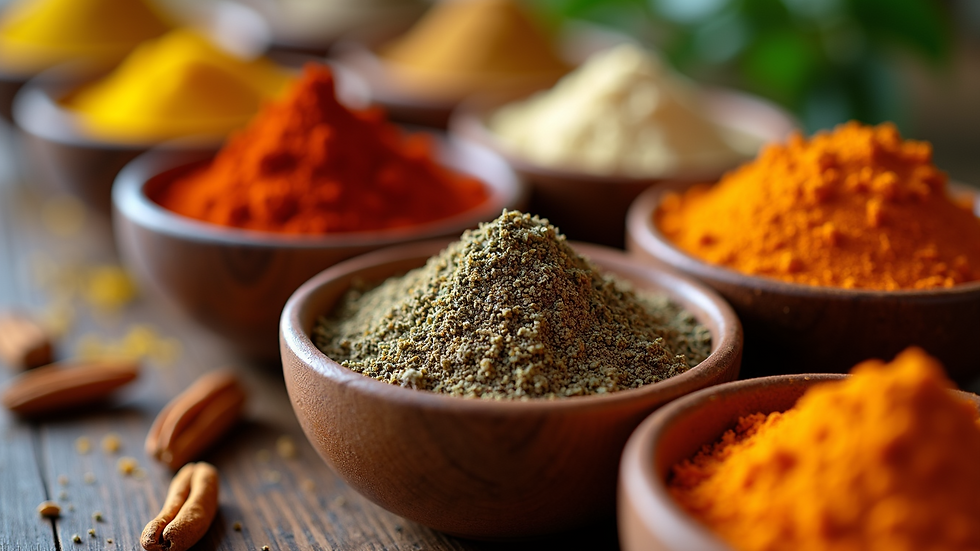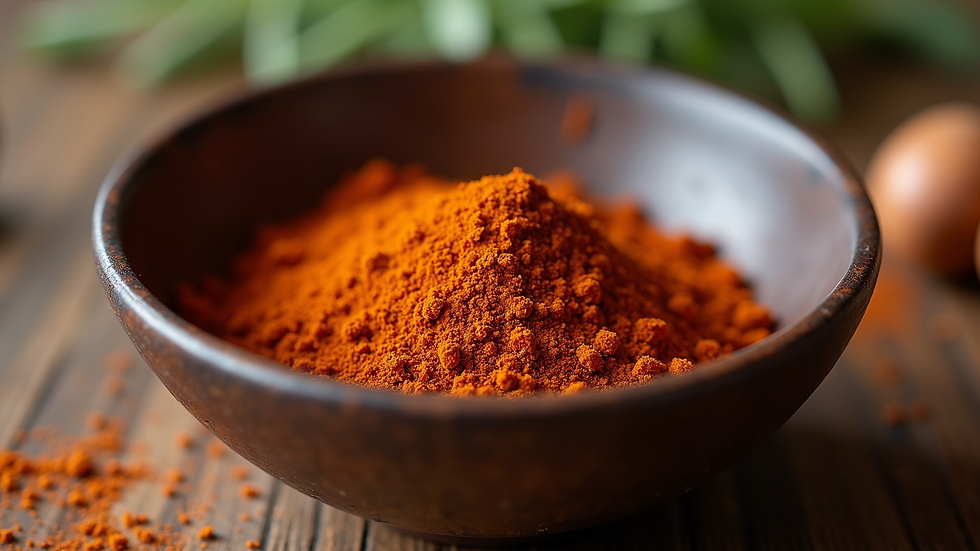Enhance Your Meat with Perfect Rubs
- Reweti Montgomery
- Oct 6
- 4 min read
When it comes to cooking meat, the secret to unlocking incredible flavour often lies in the rub. A well-crafted rub can transform a simple cut into a mouthwatering masterpiece. Whether you’re grilling, smoking, or roasting, the right rub adds depth, texture, and a burst of taste that elevates your dish. This guide will walk you through everything you need to know about the best meat rubs, how to use them, and what makes them so special.

Discovering the Best Meat Rubs for Every Cut
Choosing the best meat rub depends on the type of meat and the flavour profile you want to achieve. Rubs are typically a blend of herbs, spices, salt, and sugar, but the combinations are endless. Here are some popular rub types and how they complement different meats:
Beef: Bold and smoky rubs with paprika, black pepper, garlic powder, and brown sugar work well. These ingredients create a caramelised crust that enhances the beef’s natural richness.
Pork: Sweet and spicy rubs with cinnamon, cumin, chili powder, and brown sugar bring out the pork’s juicy tenderness.
Chicken: Lighter rubs with lemon zest, thyme, rosemary, and smoked paprika add a fresh, aromatic flavour.
Lamb: Earthy rubs with rosemary, garlic, coriander, and black pepper highlight lamb’s robust taste.
When applying rubs, always pat the meat dry first. This helps the rub stick better and form a delicious crust during cooking. For best results, apply the rub generously and let the meat rest for at least 30 minutes before cooking. For tougher cuts, marinate with the rub overnight in the fridge.

How to Make Your Own Meat Rubs at Home
Making your own rubs is simple and allows you to customise flavours to your liking. Start with a base of salt and sugar, then add spices and herbs that suit your taste. Here’s a basic recipe to get you started:
Basic Meat Rub Recipe:
2 tablespoons brown sugar
1 tablespoon paprika
1 tablespoon salt
1 teaspoon black pepper
1 teaspoon garlic powder
1 teaspoon onion powder
1/2 teaspoon cayenne pepper (optional for heat)
Mix all ingredients thoroughly and store in an airtight container. This rub works well on beef, pork, and chicken.
Tips for creating your own rubs:
Use fresh spices for the best aroma and flavour.
Adjust sugar levels depending on how sweet you want the rub.
Experiment with herbs like thyme, oregano, or sage for unique twists.
Keep a small batch for immediate use and store the rest in a cool, dark place.
By making your own rubs, you can tailor the seasoning to match the occasion, whether it’s a casual barbecue or a special dinner.

What Rubs Do Pitmasters Use?
Pitmasters are experts in smoking and grilling, and their rub choices reflect years of experience. They often use rubs that balance sweetness, saltiness, and heat to complement slow-cooked meats. Some common ingredients in pitmaster rubs include:
Paprika: Adds colour and a mild smoky flavour.
Brown sugar: Caramelises during cooking, creating a sweet crust.
Salt: Enhances all other flavours and helps retain moisture.
Black pepper: Adds a sharp bite.
Chili powder or cayenne: Provides heat and complexity.
Garlic and onion powders: Offer depth and savoury notes.
Pitmasters also pay attention to the texture of the rub. A coarse grind can create a crunchy bark on smoked brisket or ribs, while a finer grind is better for chicken or pork.
If you want to try rubs inspired by professionals, consider exploring meatheads rubs for high-quality blends designed to bring out the best in your meat.
Tips for Applying Rubs Like a Pro
Applying rubs correctly is just as important as the rub itself. Here are some practical tips to get the best results:
Pat the meat dry: Moisture prevents the rub from sticking properly.
Use your hands: Rub the seasoning into every nook and cranny for even coverage.
Don’t be shy: Generous application ensures a flavourful crust.
Let it rest: Allow the meat to absorb the rub for at least 30 minutes, or overnight for tougher cuts.
Use a binder if needed: A light coating of mustard or oil can help the rub adhere better, especially on lean meats.
Cook low and slow: For smoked or slow-roasted meats, the rub will develop a rich bark over time.
By following these steps, you’ll create a delicious, flavour-packed crust that enhances the meat’s natural juices.
Experimenting with Flavour Profiles
One of the joys of using rubs is the ability to experiment with different flavour profiles. Here are some ideas to inspire your next rub creation:
Sweet and smoky: Combine brown sugar, smoked paprika, cumin, and chipotle powder.
Herbaceous and fresh: Mix rosemary, thyme, lemon zest, garlic powder, and sea salt.
Spicy and bold: Use cayenne, black pepper, chili powder, garlic, and a touch of brown sugar.
Exotic and aromatic: Try coriander, turmeric, cumin, cinnamon, and a pinch of clove.
Don’t hesitate to mix and match spices to find your perfect blend. Keep notes on your combinations so you can recreate your favourites.
Elevate Your Cooking with the Best Meat Rubs
Using the best meat rubs is a simple way to take your cooking to the next level. Whether you buy pre-made blends or create your own, rubs add flavour, texture, and visual appeal to your meat dishes. Remember to apply them generously, let the meat rest, and cook with care.
For those looking for expertly crafted blends, meatheads rubs offer a range of options designed to suit different meats and cooking styles. With the right rub, every meal becomes a celebration of flavour.
Start experimenting today and enjoy the delicious results!



Comments